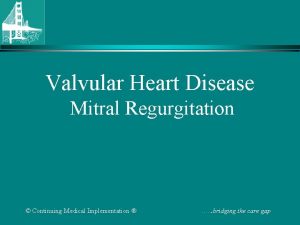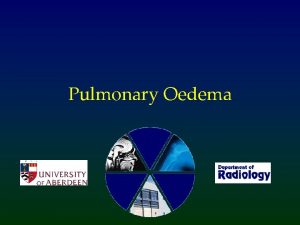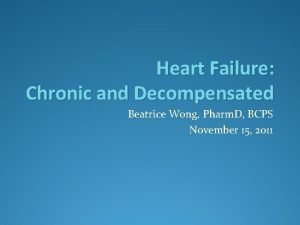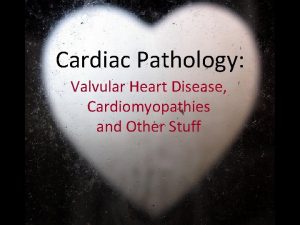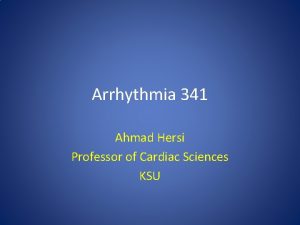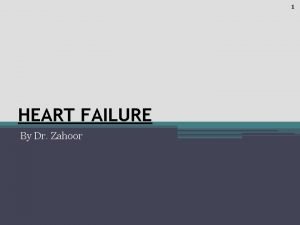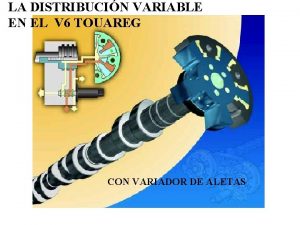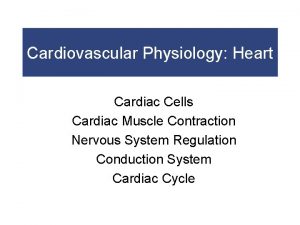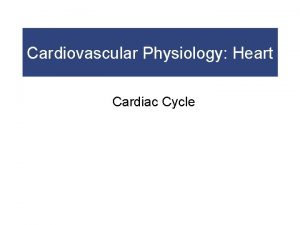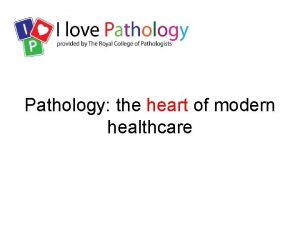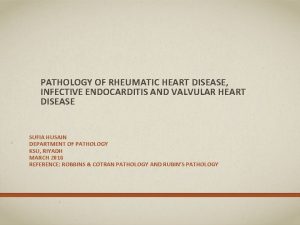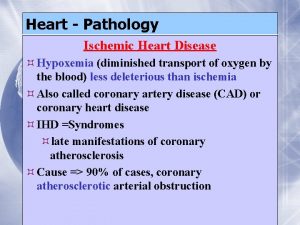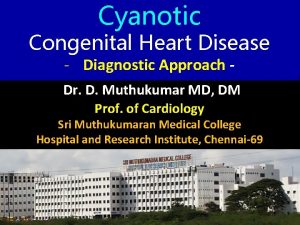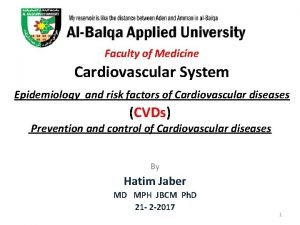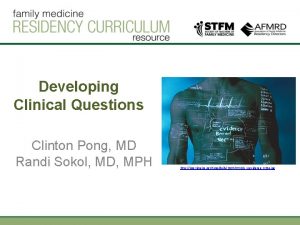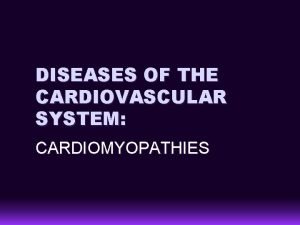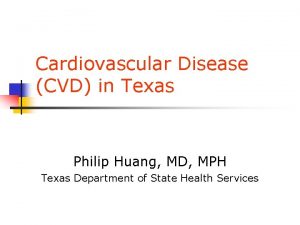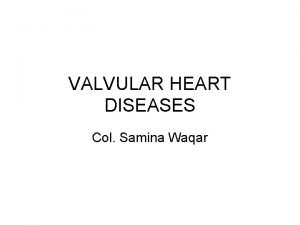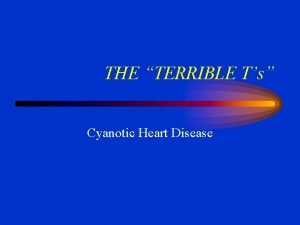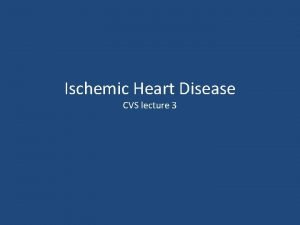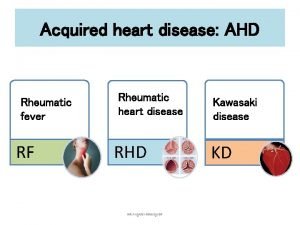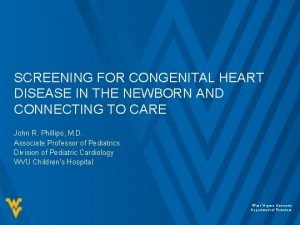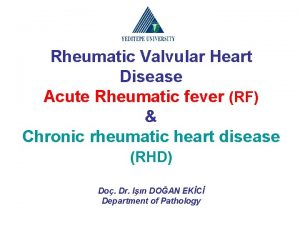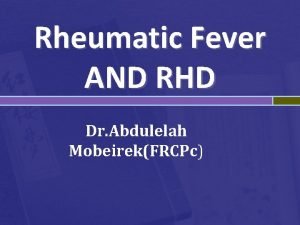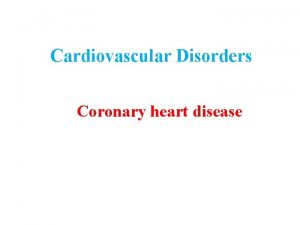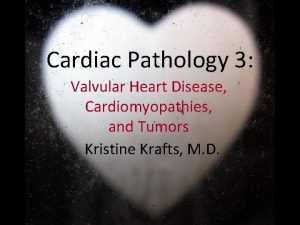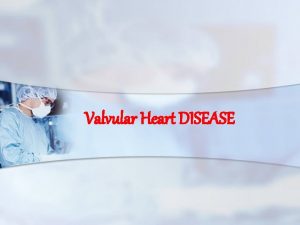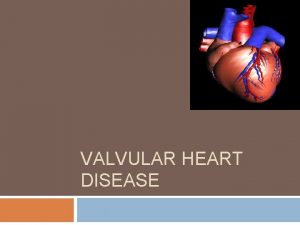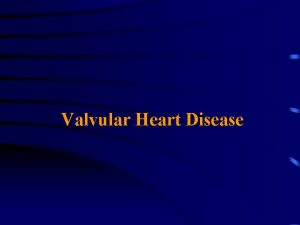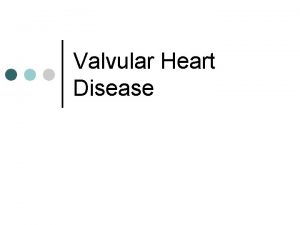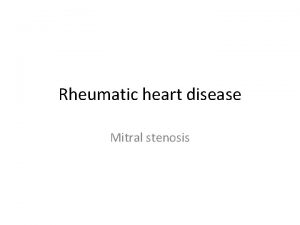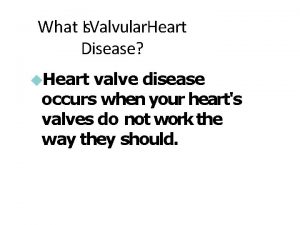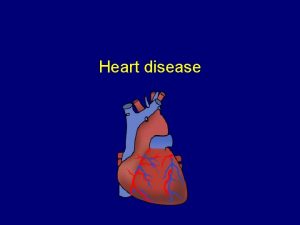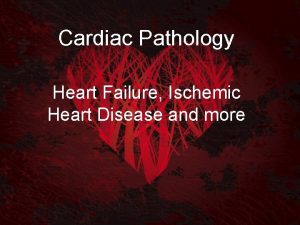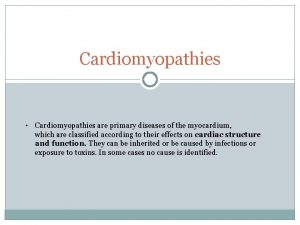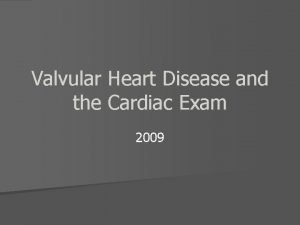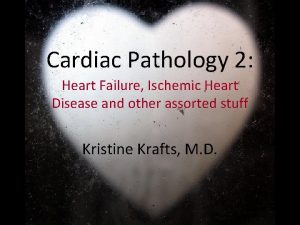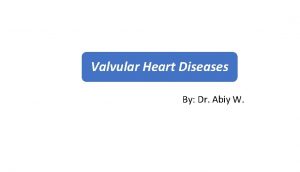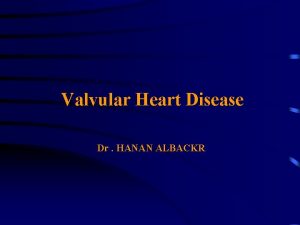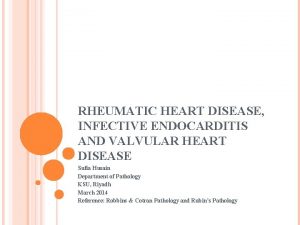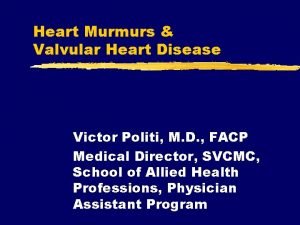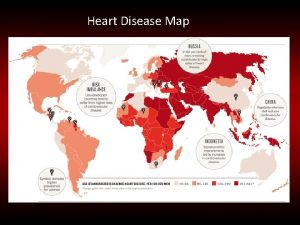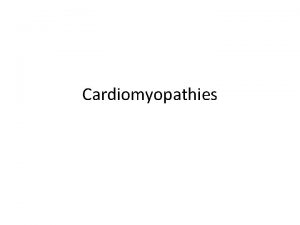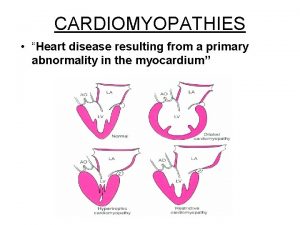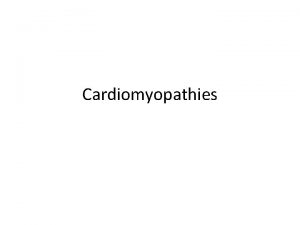Cardiac Pathology Valvular Heart Disease Cardiomyopathies and Other




































- Slides: 36

Cardiac Pathology: Valvular Heart Disease, Cardiomyopathies and Other Stuff

Cardiac Pathology Outline • Blood Vessels • Heart II

Cardiac Pathology Outline • Blood Vessels • Heart I • • Heart Failure Congenital Heart Disease Ischemic Heart Disease Hypertensive Heart Disease

Cardiac Pathology Outline • Blood Vessels • Heart II • • Valvular Heart Disease Cardiomyopathies Pericardial Disease Tumors

Cardiac Pathology Outline • Blood Vessels • Heart II • Valvular Heart Disease

Valvular Heart Disease • Stenosis and/or insufficiency • Stenosis: failure to open • Insufficiency: failure to close • Murmurs: blood ejects rapidly through the stenosis/regurgitation occurs

Calcific Aortic Stenosis • Part of aging process • Results in – increased LV pressure – LV hypertrophy – Relative ischemia • Angina, CHF, or fainting (syncope)

Calcific aortic stenosis


Mitral Valve Prolapse • Common (5% of adults in US, F>M) • Ballooning of mitral leaflets back into the upper heart chamber • Myxoid/mucoid change within leaflet • Pathogenesis unknown • Most patients asymptomatic – May have headaches, fatigue, chest pains

Mitral valve prolapse

Rheumatic Valvular Disease • Rheumatic fever: systemic inflammatory disease occurring a few weeks after strep throat • Valves (esp. mitral) become scarred • Consequence: stenosis (± regurgitation)

Rheumatic Fever • Body makes antibody to strep bug that cross- reacts with antigens in heart and joints • 2 -3 weeks after strep throat, patient gets: • migratory polyarthritis • pericardial friction rub, arrhythmias • Chronic disease can reappear decades later • mitral stenosis, left atrial enlargement, thrombi • increased risk of infective endocarditis • Long term prognosis variable

Strep throat Antibody production Antibody cross-reaction with heart vegetations Aschoff body pericarditis


Mitral stenosis with commissural fusion

Infective Endocarditis • Microbial invasion of endocardium and/or heart valves • Acute endocarditis • highly virulent bug attacks normal valve • half of patients dead within days to weeks • Subacute endocarditis • low virulence bug colonizes abnormal valve • slow onset, long course, most recover • Symptoms: fever, flu-like symptoms • Complications: septicemia, arrhythmias, renal failure, systemic emboli

Infective endocarditis: vegetations on valve


• Vegetation


Infective endocarditis: splinter hemorrhage of nail bed

Cardiac Pathology Outline • Blood Vessels • Heart II • Valvular Heart Disease • Cardiomyopathies

Cardiomyopathies • Diverse group of disorders in which there is intrinsic myocardial dysfunction • Lots of causes; some idiopathic • Three groups • Dilated congestive cardiomyopathy • Hypertrophic cardiomyopathy • Restrictive cardiomyopathy • Non-inflammatory conditions that cause impaired myocardial function

Dilated (Congestive) Cardiomyopathy • Heart dilates, enlarges, and can’t contract well • Ejection fraction typically falls, ESV and EDV increase = stretching of myocardium • Causes • viral • Alcohol (main cause)/toxin • genetic abnormalities • peripartum • Slowly progressing CHF • 70% of patients dead within 5 years

Hypertrophic Cardiomyopathy • Massively hypertrophied L ventricle can’t fill • Cause: mutation in a sarcomere protein gene – Septum enlarges disproportionately • Symptoms: atrial fibrillation, CHF, arrhythmia, sudden death • Treatment: drugs to promote ventricular relaxation or surgical excision of part of septum • Prognosis: about 4% of patients die each year

Dilated (L) and hypertrophic (R) cardiomyopathy

Sarcomere of cardiac muscle

Restrictive Cardiomyopathy • Heart wall is stiff; can’t fill during diastole • Cause: Idiopathic or secondary to systemic disease (amyloidosis, hemochromatosis, sarcoidosis) • Symptoms: shortness of breath, peripheral edema • Treatment: not often helpful • 70% of patients dead within 5 years

Cardiac Pathology Outline • Blood Vessels • Heart II • Valvular Heart Disease • Cardiomyopathies • Pericardial Disease

Pericardial Disease • Pericarditis • Secondary (MI, radiation, pneumonia) or primary (infectious) • Atypical chest pain • Dangers: tamponade, chronic fibrosis

Acute pericarditis

Types of Pericardial Disorders • Pericardial effusion – The accumulation of fluid in the pericardial cavity • Serous (CHF), serosanguinous (aortic dissection), chylous (lymphatic obstruction) • Outcome depends on stretchiness of pericardial sac • Cardiac tamponade – Slow or rapid compression of the heart due to accumulation of fluid, pus, or blood in pericardial sac

Cardiac Pathology Outline • Blood Vessels • Heart II • • Valvular Heart Disease Cardiomyopathies Pericardial Disease Tumors

Cardiac Tumors • Most common: metastatic • Heart is a rare site of metastasis • Lung cancer, lymphoma most common • Primary tumors uncommon • Most are benign • Most common: myxoma

Cardiac myxoma
 Pathophysiology of valvular heart disease
Pathophysiology of valvular heart disease Site:slidetodoc.com
Site:slidetodoc.com Causes of valvular heart disease
Causes of valvular heart disease Dopamine uses
Dopamine uses Pathophysiology of valvular heart disease
Pathophysiology of valvular heart disease Right sided heart failure
Right sided heart failure Pathophysiology of valvular heart disease
Pathophysiology of valvular heart disease Causes of valvular heart disease
Causes of valvular heart disease Site:slidetodoc.com
Site:slidetodoc.com Traslape valvular
Traslape valvular Crohn's disease
Crohn's disease Conduction
Conduction Heart sounds and murmurs
Heart sounds and murmurs Communicable disease and non communicable disease
Communicable disease and non communicable disease Heart pathology
Heart pathology Aschoff bodies
Aschoff bodies Ihd
Ihd Cyanotic vs acyanotic
Cyanotic vs acyanotic Cvds
Cvds Heart disease symptoms
Heart disease symptoms Randi sokol
Randi sokol Ronaldo heart disease
Ronaldo heart disease Tetralogy of fallot murmur
Tetralogy of fallot murmur Squatting position in tetralogy of fallot
Squatting position in tetralogy of fallot Heart disease cat
Heart disease cat Heart disease data
Heart disease data Rheumatic heart disease
Rheumatic heart disease 5 terrible ts
5 terrible ts Pathophysiology of ischemic heart disease
Pathophysiology of ischemic heart disease Preload and afterload
Preload and afterload Farah garmany
Farah garmany Fish mouth or buttonhole stenosis
Fish mouth or buttonhole stenosis Heart disease
Heart disease Coronary heart disease
Coronary heart disease Antianginal drugs classification
Antianginal drugs classification Rheumatic heart disease
Rheumatic heart disease Rheumatic heart disease causes
Rheumatic heart disease causes
